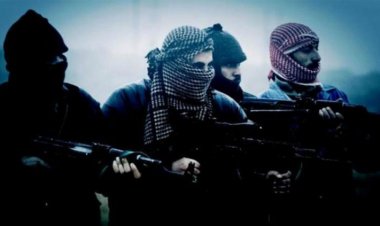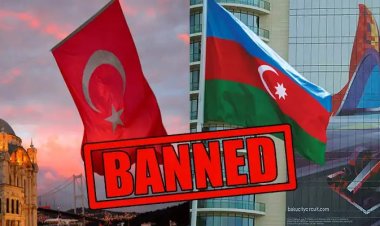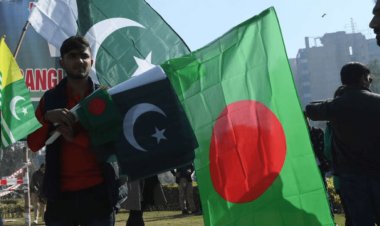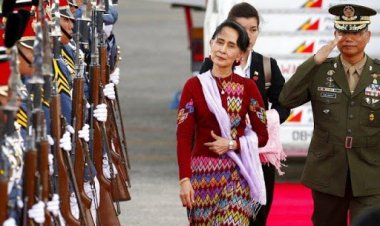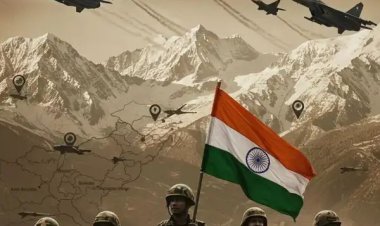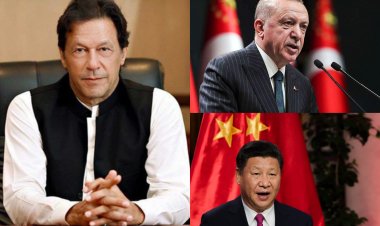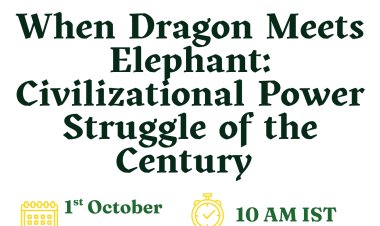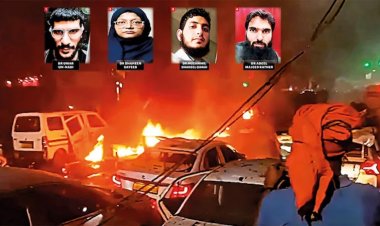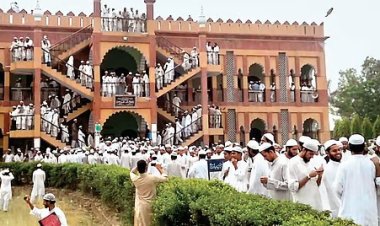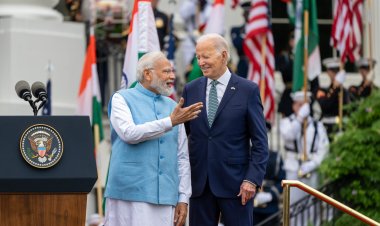A Tale of Two Eras: National Security on the India-Pakistan Border
The present article delves into the two periods of border security in the villages at India-Pakistan's LOC, the UPA Government and after 2014 the Modi Government, from the perspective of a native of that region. The article highlights how the UPA Government followed a policy of appeasement even when the Pakistani military was escalating border provocation, whereas, after 2014, the Modi Government demonstrated a robust national security posture.
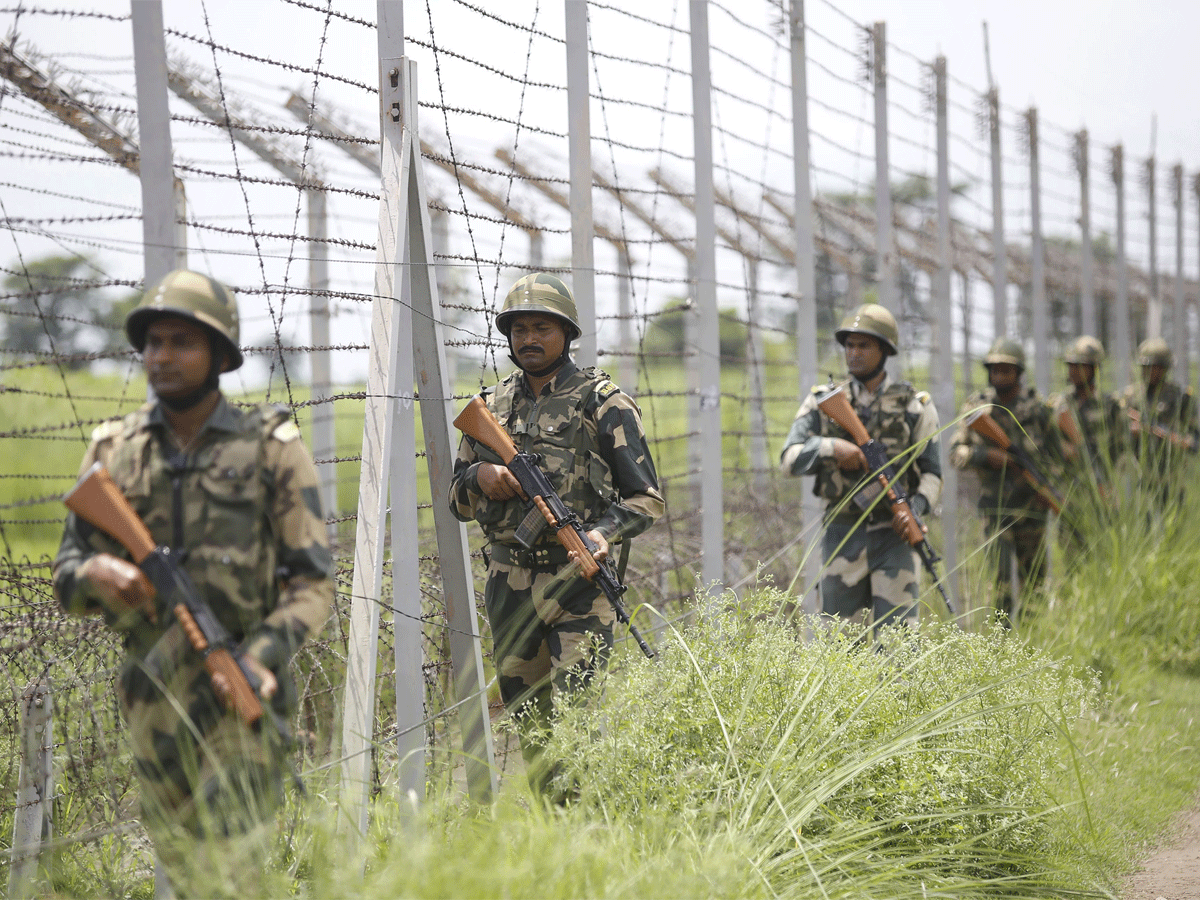
A Childhood Under Tension
In a small border village ‘Suchetgarh’ nestled between India & Pakistan, young Dvij grew up amidst the whispers of tension and fear. A bone-chilling December morning in 2006, Fog, thick as buttermilk, swallowed the fields, muffling sounds and lending an air of mystery. The biting cold hung heavy in the air as thirteen-year-old Dvij accompanied his father and a group of laborers to their fields near the International Border (IB). They were installing a tube well (Bambi in Dogri), a lifeline for their thirsty crops. Dvij squinted through the haze, helping his father and laborers wrestle a heavy pipe towards the trench for their new tube-well. Every drop counted, and this winter's sting made the promise of gushing water all the more precious and this pump meant new life for their crops. Suddenly, the rhythmic clang of metal against metal screeched to a halt. A guttural growl ripped through the cotton-wool silence, followed by the ominous crunch of boots on frosted ground. The fog swirled, revealing Pakistani Rangers emerging from its depths, their faces grim under olive green caps. The air crackled with tension. Their harsh Urdu words, laced with venom, sliced through the morning peace.
“Stop this installation right now and how dare you think of doing this" the rangers barked.
(yeh Bambi (tubewell) lagana band kro aur border ke pass yeh sab krne ki zurat kaise ki tumne)
"This is my land and our country" Dvij's father replied, his voice heavy with a mixture of anguish and defiance. "What problem could you possibly have with us bringing water to our own fields? This tube-well isn't a weapon, it's life itself."
(yeh meri zameen hai aur yeh hmaara desh hai aapko kya dikkat hai isse, mein koi hathyar nai lga rha zahan, yeh paani ka saadan hai)
“Our orders are in our pockets, and yours are in Delhi. It wouldn't take us two minutes to destroy this tube-well and send you to hell along with it.” the Rangers threatened with sadistic glee!
(Hmaare orders hmaari pocket mein hain aur Tumhaare orders Delhi mein, hame do min nai lagenge isko barbaad krne mein saath mein tumhe jahannum pahunchaane mein)
Fear, sharp and cold, gnawed at Dvij's insides, but watching his father stand tall, his jaw set firm, instilled a spark of defiance in the young boy's heart. This was their land, their country, and they can't be bullied out in their country. In the meantime, the rangers' taunts were cut short by the arrival of Indian Border Security Force personnel. Their crisp uniforms stood in stark contrast to the olive drab of the Pakistani Rangers. The Indian officer, Inspector Pandey, a man whose calm demeanor hid a core of steel, approached with measured steps. Inspector Pandey carried a heavy burden. Orders from Delhi mandated maintaining peace at all costs, even when facing constant bullying and threats from the Pakistani Rangers. Pain flickered in his eyes as he sought a peaceful solution. He understood our need for the Tube-well, but ultimately agreed to their demands, assuring them the Tube-well wouldn't be installed. Explaining this decision, a sense of defeat hung heavy in his voice. The government's directive, to avoid provoking Pakistan at that time, left him feeling shameless.
Frustration and A Fragile Peace on the Border
A History of Tension on the Border
This wasn't the first time the rangers had bullied them. Over the years, the villagers had endured a string of harassment. The Pakistani rangers seemed to fire on whims, celebrating a cricket victory or simply flexing their perceived power with bursts of gunfire that echoed through the trembling fields. It's important to remember the positive developments that had occurred in September 2003, following a period of heightened tensions marked by Operation Parakram, a significant step towards peace was taken. General Pervez Musharraf, then President of Pakistan, called for a ceasefire at the UN General Assembly. This agreement, reached in September 2003, aimed to de-escalate tensions and create a more peaceful environment along the India-Pakistan border.
Cricketing Rivalry and Provoked Firing
The year 2004 witnessed a mix of cricketing rivalry and border tensions between India and Pakistan. While the Indian cricket team's tour of Pakistan in March-April 2004 saw them trounce their hosts in both the ODI and Test series, thankfully, the situation at the borders remained calm during those matches. The tables turned later in November 2004 when Pakistan toured India in 2004-2005. BCCI's platinum jubilee celebration ODI match was played at the iconic Eden Gardens in Kolkata, on November 13th, 2004 in which Pakistan emerged victorious, winning by 6 wickets. This victory was the first instance of firing by Pakistani rangers at the Suchetgarh border post Ceasefire agreement of September 2003. Reports soon emerged of celebratory gunfire erupting from Pakistani border posts across various sectors, including Suchetgarh, Rspura and Samba Sectors. This celebratory act, though intended as a joyous expression, served as a stark reminder of the fragile peace that existed along the border. The situation of the day demanded a forceful response, a strong retaliation. Yet, demonstrating remarkable restraint, our forces bypassed retaliation. In favor of a diplomatic approach, they initiated a flag meeting with the opposing side. Initially, prioritizing such meetings after Pakistani firing incidents seemed like a prudent approach under the UPA government, which had issued orders through the Home Ministry to prioritize peace at any cost. However, this practice became the norm, breeding frustration, especially among the village youth.
On the India-Pakistan border, a different kind of battle raged while the two cricketing giants clashed on the field in March-April 2005. On March 28th, 2005, when Pakistan's cricket team's victory in Bengaluru Test, levelling the test series 1-1, coincided with another round of escalatory firing from Pakistani rangers. While Indian victories during ODI series, like Sehwag's ton in First ODI and Dhoni's ton with helicopter shots in second ODI, sparked celebrations among the young villagers on Indian side but they were mere celebrations limited to bursting crackers only. The situation reached a breaking point on April 17th, 2005 with Pakistan's ODI series victory 4-2, coincided with a heavy volley of firing, tragically claiming the life of a villager. This loss cast a grim pall, highlighting the stark contrast between the cricket pitch and the border. This relentless bullying by the enemy fueled outrage. Every incident ignited fresh anger, with villagers thronging Inspector Pandey, the BSF company commander, demanding a forceful response. Inspector Pandey, however, was locked in his own struggle. Bound by the government's orders prioritizing peace at any cost, he felt the weight of his duty press heavily. Anguish and frustration mirrored the villagers' emotions, but his hands were tied. He couldn't retaliate without authorization, a fact that caused him immense personal turmoil.
Conflicting Policies and Ongoing Struggles
The enemy forces scoffed at the old adage: "Cowardice invites torment, courage disarms the aggressor." It held undeniable truth. After celebratory gunfire from Pakistani rangers, our troops, restricted by the government's unwavering prioritization of peace, exercised restraint and pursued negotiations through formal meetings and conferences. This deference to the enemy only emboldened them. What began as celebratory actions in 2004 morphed into daily bullying and ultimately, a constant threat. In response, our government's sole strategy remained unchanged: flag meetings and empty pronouncements of peace. The Indian government pursued a seemingly contradictory approach towards Pakistan. While national leadership engaged in peace talks and trade initiatives, the Pakistani military continued its aggressive tactics to engage in bullying tactics, threats, and unprovoked firing along the International Boundary. This conflicting situation directly impacted Dvij, his father and fellow villagers. There were regular discussions in the village that what is the compulsion of government to do all this while ignoring their citizens and soldiers serving at the borders which were overshadowed by developments like the resumption of trade with pakistan in 2007, the opening of the LoC trade route via Chakan da Bagh in 2008, and then the devastating Mumbai attacks later that same year. The 26/11 attacks in Mumbai did cause the government to waver in its approach, particularly with strong opposition pressure. However, they ultimately returned to their policy of appeasement towards Pakistan, for reasons that remain unclear. Despite the 2012 execution of the sole surviving Mumbai attacker AJMAL KASAB, intended to appease public sentiment, Government continued the peace process with Pakistan. This policy persisted even as border provocations by Pakistani Rangers intensified. Dvij and his family's dream of a installing Tube-well remained unfulfilled, mirroring the frustrations of border villagers and BSF soldiers. The latter were bound by orders to restrain from retaliation, focusing instead on flag meetings and maintaining peace at all costs. Following this, Prime Minister Manmohan Singh met with his Pakistani counterpart, Nawaz Sharif, on the sidelines of the UN General Assembly in September 2013.
The Modi Era: A Shift in Strategy
However, the 2014 change in government, with the rise of the Modi administration known for its tough stance on Pakistan, brought hope to border residents. Yet, this initial optimism was dashed when the new government extended an olive branch by inviting Prime Minister Sharif to Modi's inauguration ceremony in May 2014, with media portraying it as a significant gesture. For the border residents, this move was a source of disappointment and confusion. Prime Minister Modi further surprised many with an unannounced visit to Pakistan to meet Prime Minister Sharif on his birthday and attend his granddaughter's wedding. However, Modi's approach swiftly shifted upon realizing Pakistan's duplicity, evidenced by the Pathankot airbase attack in January 2016 and the Uri attack in September 2016. The border villages were gripped by immense anguish and pain. However, a turning point in national security emerged from the aftermath of the Pathankot and Uri attacks. In a bold move, Indian troops conducted a cross-Line of Control operation in September 2016, known as a "Surgical Strike," targeting militant launchpads. This unprecedented action marked the first time since 2003 that villagers on the border felt a sense of celebration.
The government demonstrably prioritized a more robust national security posture. This included empowering soldiers and authorizing a proportionate response to aggression. The new policy was encapsulated in a simple directive: for every round fired by the enemy, a thousand would be returned. This shift in strategy ushered in a new era for Border residents. The surgical strikes and India's assertive approach compelled Pakistan to retreat from its persistent bullying tactics.
The Dawn of Security
The new sun rose over Suchetgarh, casting a warm light on the fields. Dvij, now a grown-up fellow, felt a sense of security he hadn't known in years. Almost ten years ago, in December 2006, installing a Tube-well in his fields was a no-go task. Constant harassment and gunfire from Pakistani Rangers made it a perilous undertaking. But that was then. Now, a sense of empowerment resonated with the border soldiers. They were finally authorized to respond decisively and even crossing the border for deep strategic strikes when required. This new approach had brought a wave of hope, renewed energy and most importantly security for the people living along the border.
Following the 2016 surgical strikes, the 2019 Balakot airstrike in response to Pulwama attack and India's strong border retaliation, Pakistan ultimately sought a ceasefire in February 2021. Trade relations had ceased in 2019, their economic condition is worsening and they are at the verge of collapse and they faced a multi-pronged challenge – Iran, Afghanistan and internal conflict in Balochistan.
Recently, a report published by the respected UK publication, ‘The Guardian’, claimed that Indian agencies were involved in the elimination of twenty Pakistan-based militants over the past four years. These developments exemplify India's assertive approach and growing national strength, offering a beacon of hope for border residents like Dvij and his fellow friends.
From "Last Village" to "First Village"
In the past, border villages were often referred to as the "last village" of the nation. However, a shift in perspective has emerged. These villages are now recognized as the "First Villages" of the country, thanks to significant infrastructure development initiatives like the ‘Vibrant Village Programme’. This program has brought about a range of improvements, including enhanced road connectivity, communication towers, fortified bunkers in every house of border resident and improved educational facilities.
And Finally The Tube-well
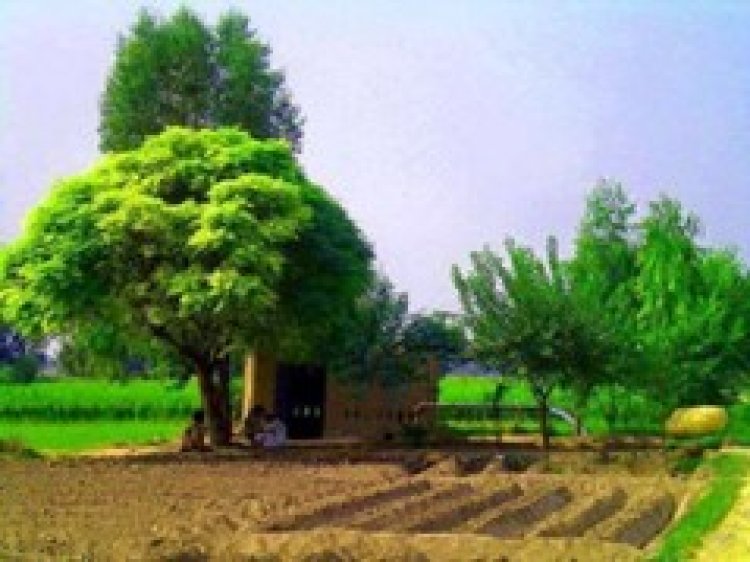
The sight of Dvij's operational Tube-well standing sentinel near the Suchetgarh Border Fence serves as a powerful spirit of defiance against Pakistani forces. It transcends its utilitarian purpose, transforming into a potent symbol. This incident exemplifies the importance of national security and the impact of Prime Minister Modi's leadership in strengthening it. On one hand, it underscores the paramount importance of national security. A functional well, where once there was only fear, signifies the ability to live freely and cultivate the land – a right secured by a nation that prioritizes its defense. On the other hand, the well serves as a testament to the impact of decisive leadership. The Tube-well, therefore, becomes a beacon of hope, not just for Dvij, but for all the residents of the Border Villages. It whispers a promise of a secure future, where life can be nurtured and dreams can take root.
Disclaimer: This paper is the author's individual scholastic contribution and does not necessarily reflect the organization's viewpoint.
Dvij is the pseudonym of the author. He is a terrorism researcher in Kashmir, working at the grassroots. His identity can not be revealed for security reasons.

